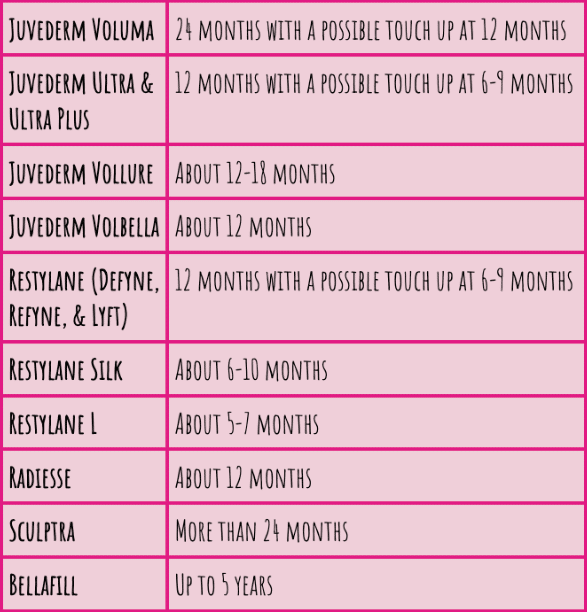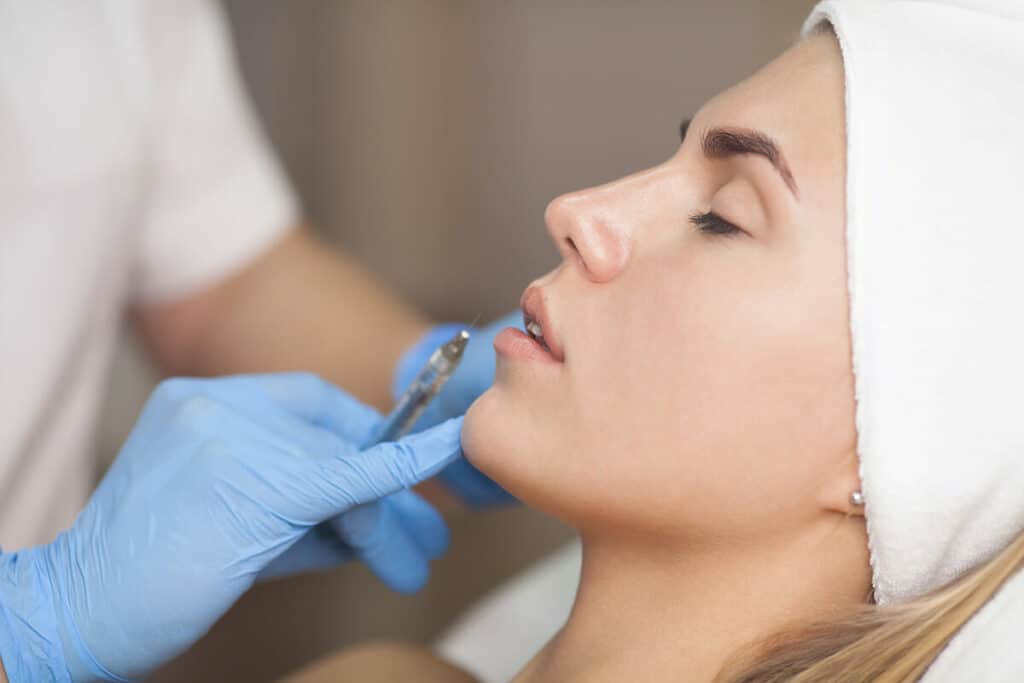Beauty regimens trace back to ancient eras nearly 6,000 years ago. The strive to defy aging and sculpt one’s appearance is timeless, and now more than ever before, you have the tools to achieve the results you desire. While creams and serums have come a long way since their first arrival, there is only so much they can do for skin elasticity and facial volume. As a result, people today often turn to dermal fillers.
In 2020, there were over 13 million minimally invasive cosmetic procedures, with dermal fillers topping the list. When it comes to aging, sagging, or facial contouring, dermal fillers go the extra mile. As you get older, your skin loses its elasticity and the muscle and fat begin to thin. Even at a young age, you may find that you want to enhance certain features or have the appearance of more defined bone structure. Dermal fillers help you achieve these goals by:
- Smoothing out lines
- Restoring lost volume
- Plumping up the skin
By providing volume, dermal fillers transcend wrinkle creams. The volume can mimic a bone to smooth out a nose bump or extend and define a jawline. With the right doctor, you can leave a procedure with natural yet noticeable results.
It’s evident that dermal fillers have pioneered a new division of cosmetic enhancements which lies in a happy spot between topicals and surgeries. There’s a myriad of before and after pictures as well as Kylie Jenner’s lips to testify to the effectiveness of fillers, but the question remains: how long do they last? If you’re considering getting dermal fillers, but need to know how long they last and which one to get, this article will help answer those questions
What They Are & What They Do
Dermal fillers are an injection of serum – most often hyaluronic acid – that serve to enhance, restore, or redefine facial features. Hyaluronic acid is a natural compound that bolsters production of collagen and elastin to make skin appear hydrated, plump, and consequently provide structure. This product works for all ages, whether the goal is to bring back lost volume or to instill volume that was never there to begin with.
Before getting fillers, you will have a consultation appointment with your doctor where you discuss your goals, the best option for you, and what that will look like. During the procedure, you will be wide awake, but some medical professionals use numbing agents to ease any potential discomfort. Your entire visit should take no longer than an hour and the downtime afterwards is minimal. So, if you want to go during your lunch break, you certainly can! Arguably one of the best aspects of this procedure is that the results appear for most people within 24-48 hours, if not immediately.

How Long They Last
Like most dermatologic/cosmetic procedures, results vary person to person. Some dermal fillers last 6-12 months and others 2-5 years. The longevity of dermal fillers ultimately comes down to a few specific components:
- Type of product
- Placement
- Amount
- Metabolism
Type of Product
There are numerous brands of dermal fillers now on the market, each having their own subset of fillers formulated for different purposes. The variation in formulation dictates the placement and purpose of the product, and consequently the longevity. To paint a clear picture of the lifetime of your fillers based on the product you use, we’ve created a table for reference:

Hopefully this helps you eliminate products which do not work for your timeline and discover products that are potential options for your desired results.
Placement
Product and placement are intertwined in their effect on dermal filler longevity. In other words, where you want to put the product determines which product you use, how deeply it is inserted, and in return it’s longevity. For instance, if your goal is to add youthful volume to your cheeks then your best bet is to choose Juvederm volume which is inserted more deeply and is thicker than other products so as a result, it lasts longer. If you reference the table, this all checks out!
The big takeaway here is that: Deeper, thicker products last longer than thinner, surface-level products and which one you end up with is going to determine the effect you are going for and where you want the injection.
So, a good first step in the process of getting dermal fillers is mapping out where on your face you would like to see an effect. This will help answer questions regarding product type and longevity.

Metabolism
Some people metabolize fillers – break down the product – quicker than others. The result is that they experience the results of their fillers for a shorter duration. Also, dermal fillers tend to last longer in areas with less movement. Thus, you can assume that if you tend to have a fast resting metabolism and you get lip fillers, your results will last nowhere near as long as an individual with a slow resting metabolism who receives fillers for forehead wrinkles. You would be looking at a visit every 5-12 months, while the other individual would have results that last 12 months at a minimum.
Amount
Unfortunately, there is little you can do to affect your metabolism and facial movements. However, the amount of filler injected can help account for faster product breakdown. You should consult your doctor to come up with a dosage of product that maximizes longevity, while remaining safe and effective. As an expert, your doctor can tailor your treatment to you!
Side Effects
Those To Prepare For
There are side effects that are expected for almost all dermal filler procedures. They’re standard protocol, tend to last 1-2 weeks at most, and are not concerning. You could have all side effects, some, or none. Most people who have 1 or more of these side effects see them dissipate within 48 hours. According to the American Academy of Dermatology, they are:
- Redness
- Swelling
- Tenderness
- Bruising
Those To Prevent
Conversely, there are side effects that should be red flags. Those are as follows:
- Infection
- An allergic reaction
- Leakage of the filler from the injection site
- Nodules around the injection site
- Granulomas (an inflammatory reaction)
- Relocation of the filler
- Injury to blood vessels
- Tissue death due to blocked blood flow
Luckily, all of these adverse side effects can be averted by going to a trained, licensed, and reputable MD for your dermal fillers. To ensure you find someone with these qualities, be on the lookout for warning signs. Look at reviews and reputation, check whether the products they use are FDA approved, observe their work environment for professionality, and trust your gut after the initial consultation.
A qualified practitioner will ask you about your medical history and any supplements or medications you take, they will be able to prove their expertise through their knowledge and past experience, and they will walk you through the process in detail. If you have doubts about your practitioner’s eligibility after your initial consultation, your best bet is to avoid risking your health and look elsewhere.
What If You Don’t Like The Results
You may be wondering what happens in the event that the results are not all you hoped them to be and you’re unhappy with the outcome. Is there anything you can do to minimize the effects or decrease the longevity?
The good news is: for hyaluronic acid fillers, your doctor can use hyaluronidase to help dissolve it. This is why hyaluronic acid fillers are a great option if you’ve never had dermal fillers before – it’s a very low-stakes option.
On the flip side, if you think there’s a chance you may be less than pleased with the results, we advise you not to go for Sculptra or Radiesse brand products. This is because they are irreversible and will have to run their full course.
The Gist
The bottom line is that before you go under the needle, there are a few steps you need to take to ensure you leave feeling good in your own skin. First, become familiar with your preferences by asking:
- What do I want the filler to do?
- How long do I want it to last?
- Am I willing to endure potential swelling and bruising right after treatment?
Once you’ve gotten to know your vision, do your research, and by all means reference this guide as much as necessary. By the time you book your consultation, you’ll be prepared with the information your doctor needs to turn your vision into a reality. Despite the potential risks, as long as you follow these guidelines and go to a qualified doctor, you won’t find a better option out there for your skincare enhancements than dermal fillers.

